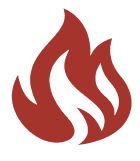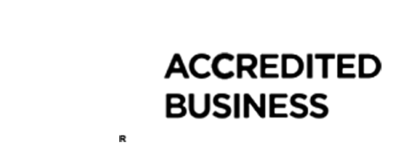“What is the Fire Damage Restoration Process? Mystery Behind Efficient Restoration”
Fire damage can be devastating, leaving properties in ruins and homeowners overwhelmed. However, understanding what is the fire damage restoration process can provide clarity and direction in such challenging times. In this article, we delve into the intricacies of fire damage restoration, uncovering the steps involved, expert insights, and FAQs to guide you through the restoration journey.
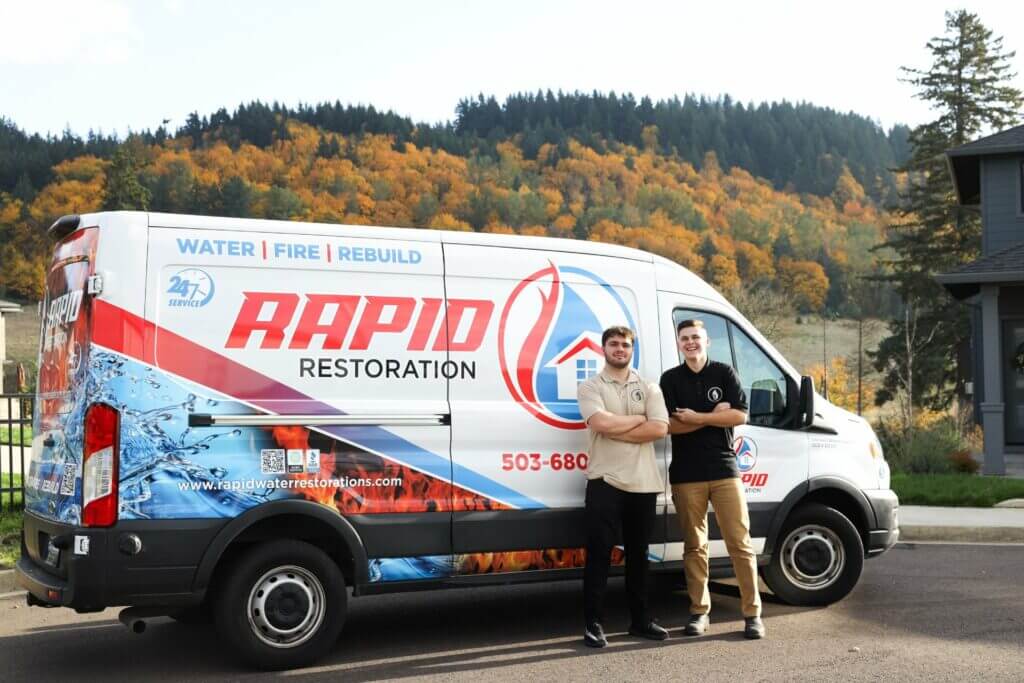

Introduction: Navigating Through the Aftermath of Fire
Emerging from a fire incident unscathed physically is one thing, but dealing with the aftermath poses a different set of challenges. The fire damage restoration process becomes pivotal in restoring not just structures but also peace of mind. Let’s embark on a journey through the restoration process, understanding its nuances and importance.
Understanding Fire Damage Restoration
Fire damage restoration is a multifaceted process that begins with a meticulous assessment of the extent of damage caused by fire, smoke, and water. Subsequent steps involve comprehensive cleaning, repairing structural damage, and restoring the property to its original state, ensuring its safety and functionality are fully restored.
Importance of Swift Restoration
Swift action is imperative in fire damage restoration to mitigate further deterioration of the property and minimize associated risks such as structural instability and mold growth. Any delay in restoration efforts can compound the damage, escalating costs and prolonging disruptions to occupants or business operations.
Assessment and Inspection
Evaluation of Damage Extent
During the assessment, professionals meticulously scrutinize the extent of damage caused by the fire, encompassing structural integrity compromises, the presence of smoke residues coating surfaces, and potential water damage incurred as a result of firefighting efforts. This comprehensive evaluation is crucial for formulating effective remediation strategies and estimating the scope of restoration needed to return the affected property to its pre-fire condition.
Identification of Salvageable Items
After disasters such as floods or fires, experts conduct assessments to identify salvageable items through cleaning and restoration processes. These items often include furniture, electronics, and personal belongings that can be restored to their pre-disaster condition. Prioritizing the recovery of these items helps minimize losses and aids in restoring affected individuals’ lives.
Safety Assessment
Safety assessment is a crucial process aimed at identifying potential hazards that could compromise the well-being of restoration workers and occupants alike. This involves thorough scrutiny for structural instability, electrical hazards, and the presence of toxic substances within the environment. By meticulously addressing these concerns, safety assessments facilitate the creation of a secure working environment conducive to practical restoration efforts and the overall health and safety of all individuals involved.
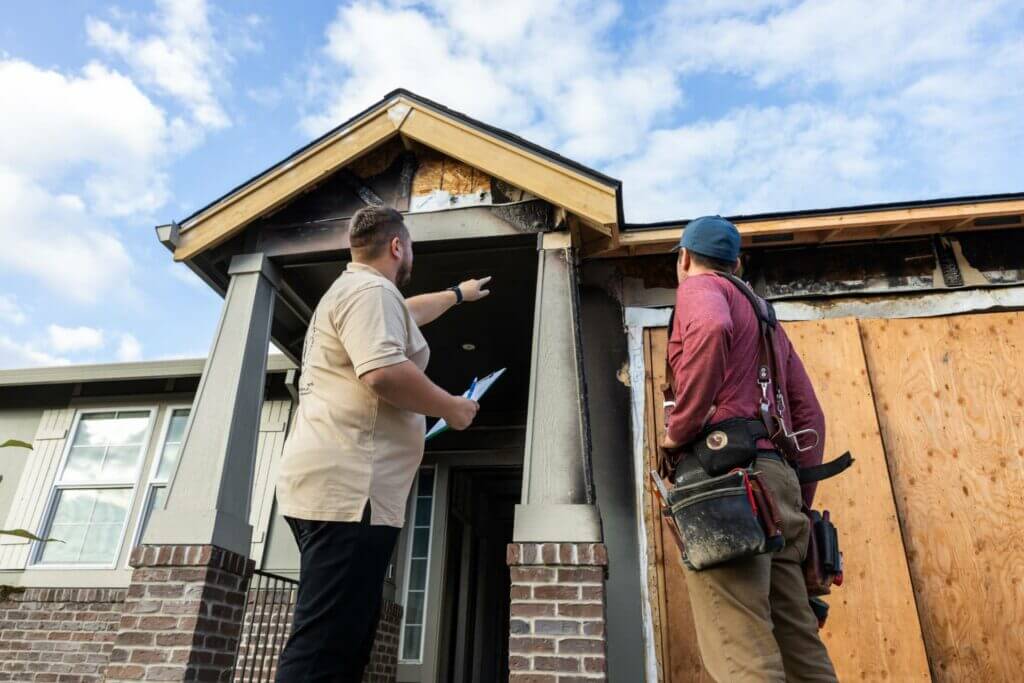

Damage Mitigation
Board-Up and Tarping Services
To mitigate potential harm from adverse weather conditions or vandalism, it is imperative to promptly board up or cover damaged windows, doors, and roof areas with tarps. This proactive measure helps safeguard the integrity of the property by preventing further deterioration and potential structural issues. Additionally, it contributes to maintaining the security and safety of the premises until proper repairs or replacements can be conducted.
Water Removal and Drying (if applicable)
Water damage may occur after firefighting efforts due to the water used to extinguish the flames. To address this, water extraction equipment is utilized to remove excess moisture from affected areas. Subsequently, drying equipment such as dehumidifiers and fans is employed to accelerate the drying process, mitigating the risk of mold growth and further damage.
Smoke and Soot Removal
Specialized techniques for smoke residue and soot removal involve a combination of chemical agents, high-powered vacuums, and meticulous cleaning methods tailored to different surfaces and materials. These techniques aim to eliminate not only visible soot but also the pervasive odor that often accompanies smoke damage. By employing these specialized methods, professionals can effectively restore surfaces and belongings to their pre-fire condition, ensuring a safe and clean environment for occupants.
Deodorization
Effective deodorization methods play a crucial role in eliminating smoke odors from properties, ensuring a clean and fresh indoor environment. These methods often involve using specialized equipment such as ozone generators, thermal foggers, or air purifiers to neutralize and eliminate lingering smoke odors. By employing these techniques, not only are the unpleasant odors eradicated, but the indoor air quality is also improved, creating a more comfortable and healthier living or working environment for occupants.
Cleaning and Restoration
Surface Cleaning of Walls, Floors, and Ceilings
When addressing surfaces affected by smoke and soot, it’s crucial to employ suitable techniques and cleaning agents to ensure thorough removal. Specialized methods such as dry cleaning, wet cleaning, or abrasive cleaning may be necessary depending on the extent of the damage and the type of surface. Utilizing effective cleaning agents designed to break down and remove soot particles without causing further harm to the surface is essential for restoring the area to its pre-incident condition.
Restoration of Salvageable Items (furniture, electronics, etc.)
Salvageable items undergo a meticulous process involving cleaning, repairing, and restoring them to their original condition, striving to reverse the effects of damage or wear. This restoration effort aims to return items to a state comparable to before the loss occurred, ensuring their functionality, appearance, and value are preserved to the greatest extent possible. Through careful attention to detail and skilled craftsmanship, salvageable items can often be reclaimed, minimizing waste and maximizing their lifespan.
Carpet and Upholstery Cleaning
Professional cleaning methods for removing smoke odors and stains from carpets and upholstery typically involve a multi-step process. Initially, specialized equipment such as industrial-grade steam cleaners or hot water extraction machines are used to penetrate the fibers deeply and lift out embedded smoke particles and residue. Following this, professional-grade cleaning solutions and deodorizers are applied to neutralize odors and eliminate any remaining traces of smoke, leaving carpets and upholstery fresh and restored. Additionally, targeted spot treatments may be employed for particularly stubborn stains, ensuring a thorough and effective cleaning outcome.
Structural Repairs and Reconstruction
Structural repairs and reconstruction involve the restoration of a property to its initial state, focusing on rectifying any structural damage resulting from a fire incident. This process typically encompasses rebuilding or reinforcing damaged load-bearing elements such as walls, beams, and foundations to ensure the structural integrity of the building. By addressing these issues comprehensively, the property can be returned to a safe and functional condition, minimizing the impact of the fire’s devastation.
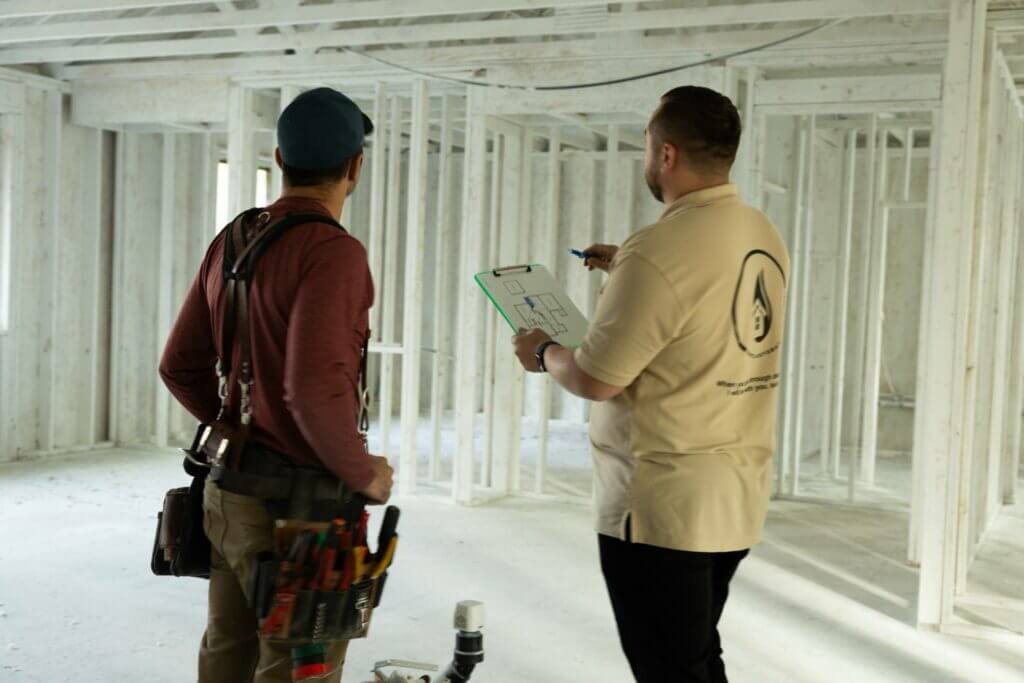

Documentation and Insurance
Documenting Damages and Restoration Process
Detailed documentation of damages and the restoration process serves as crucial evidence for insurance claims, providing transparency and clarity to both parties involved. It helps establish the extent of the damage incurred and the steps taken towards restoration, facilitating accurate assessment and fair compensation. Moreover, thorough documentation ensures proper record-keeping, aiding in future reference and potential legal proceedings if necessary.
Working with Insurance Adjusters
Restoration professionals and insurance adjusters work closely together to facilitate a smooth process for clients who have experienced property damage. This collaboration ensures that all pertinent documentation, such as damage assessments and repair estimates, is accurately provided to the insurance company. By coordinating efforts, both parties ensure that the restoration process is covered by the client’s insurance policy, alleviating financial burdens and expediting the restoration timeline.
Filing Insurance Claims
Clients receive comprehensive assistance in navigating the often complex insurance claims process, ensuring they can efficiently file claims and expedite reimbursement for restoration expenses. Through personalized guidance, clients are supported at every step, from gathering necessary documentation to liaising with insurance providers, facilitating a smoother and more efficient resolution. This tailored support not only streamlines the claims process but also alleviates stress for clients, enabling them to focus on restoring their property or assets with minimal disruption.
Final Inspection and Completion
Quality Assurance Checks
Final inspections play a crucial role in verifying that all restoration efforts adhere to established industry benchmarks and align with the specific desires of the client. These assessments involve a meticulous review of completed work to ascertain compliance with quality standards and specifications outlined in the project agreement. Ultimately, the goal of final inspections is to guarantee that the restoration outcome not only meets but surpasses both regulatory requirements and client expectations.
Client Walk-Through and Approval
Clients are cordially invited to visit the property and assess the restoration work upon its completion. Their feedback and approval are highly valued, ensuring satisfaction with the restored condition of the property. This inspection opportunity allows clients to confirm that their expectations have been met and provides an opportunity for any necessary adjustments before finalizing the restoration process.
Follow-up services and Maintenance Advice
After the initial service is completed, clients may be offered follow-up services to address any lingering concerns or issues that arise. These follow-up services ensure that any unforeseen problems are promptly addressed, providing clients with peace of mind and comprehensive support. Additionally, clients are equipped with maintenance advice to mitigate the risk of future fire damage, empowering them with the knowledge needed to safeguard their property in the long term.
FAQs (Frequently Asked Questions)
How long does the fire damage restoration process take?
The duration of the restoration process varies depending on the extent of damage. Minor incidents may take a few days, while extensive damage could require several weeks.
Is it safe to remain in the property during the restoration process?
In most cases, it is advisable to relocate temporarily during the restoration process to ensure safety and facilitate restoration work.
Will insurance cover the cost of fire damage restoration?
Most homeowner’s insurance policies cover fire damage restoration. However, coverage may vary depending on the policy terms and the cause of the fire.
Can I salvage any belongings after a fire?
Professional restoration companies employ specialized techniques to salvage and restore belongings affected by fire, smoke, and water damage.
How can I prevent fire damage in the future?
Regular maintenance of electrical systems, installation of smoke detectors, and adherence to fire safety protocols can help prevent fire incidents and minimize damage.
Are DIY restoration efforts recommended?
Fire damage restoration requires specialized knowledge, equipment, and expertise. Attempting DIY restoration efforts can pose safety risks and may result in further damage to the property.
Conclusion: Restoring Hope Amidst Destruction
The fire damage restoration process is a beacon of hope for homeowners grappling with the aftermath of fire incidents. By understanding the intricacies of the restoration process and seeking professional assistance, affected individuals can embark on a journey toward restoring their properties and reclaiming their peace of mind.
